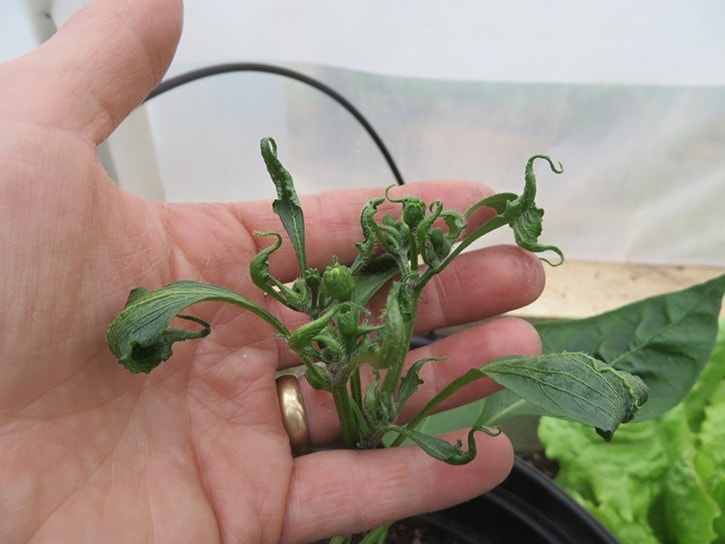Dear Sir:
My tomato plants are dying, my peppers are curling, my potatoes, the beans, the sunflowers and many more plants looks sick and curled and dying.
I’m a gardener in Rosswood and I’m trying to grow healthy food for my family of five. I’ve been working hard in the five years since we got this place to get to the point we reached this spring, where I can grow all my plants from seed.
I remodeled basically my whole garden and added a big composting area. I was just installing an irrigation system to save time on the watering when slowly my plants started curling and dying.
What was happening? I had followed a post on Facebook last year about a gardener in Thornhill that had the same problem. And now it is happening here, in my own garden.
And we are not the only ones affected by this. The more I talked about it, the more cases I found, right here in Terrace.
Somehow we all got picloram (Grazon), a herbicide to control perennial weeds, in our garden. Most pesticides, including herbicides, break down quickly in the composting process.
Picloram, Clopyralid and Aminopyralid do not. These herbicides are used to control broadleaf weeds such as Canada thistle in specific cases.
And those are turf such as golf courses, pastures for animals such as cattle, horses and other animals, grass family crops such as wheat, barley, grass hay, transmission line rights of way, and ditches along roads.
Did you ever see the herbicide signs they put up along the highway? There are also some on Ferry Island. Grazon has been used there. When animals graze on the treated pasture or hay, the chemicals pass through the animals and persist in the manure for several years — even if the manure is processed into compost. Gardeners use the contaminated hay, straw, grass clippings, manure or compost on their crops, bringing damage or slow death to plants. These poisons are so powerful that they can damage sensitive crops at very low levels.
I am not sure how I got it in my compost. I’m still trying to find out. One neighbour got it in straw she used for mulching, another through horse manure, and a third one through hay she was feeding to her animals.
The possibilities are many and often it is very difficult do find out how it came into your garden. But I know it will stay active for years.
My neighbour’s plants grow healthy again after almost seven years. I will have to dig out all the soil from my greenhouse, the new planter, the one bed in front of the greenhouse and wait and see how bad it is in the rest of the garden because I have added the contaminated compost soil to almost everything in my garden...
So if you are raising animals, make sure the hay you feed them is not contaminated and the field they are grazing on has not been sprayed in the past.
Gardeners, ask questions if you get manure, or hay, or straw, or top soil. Ask whether animals have been fed hay harvested from ditches or transmission lines.
Why is such a powerful chemical being used so freely? The consequences are so obvious and so devastating. It is not a new phenomenon. It poisons our fields, gardens, even water. Who is taking control, who is responsible for the disaster in our gardens?
Christine Schonbachler,
Rosswood, B.C.
